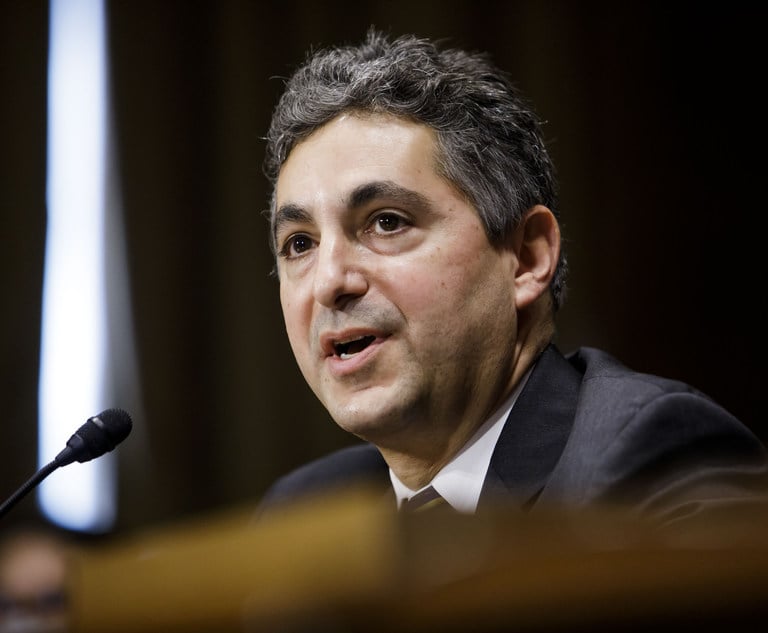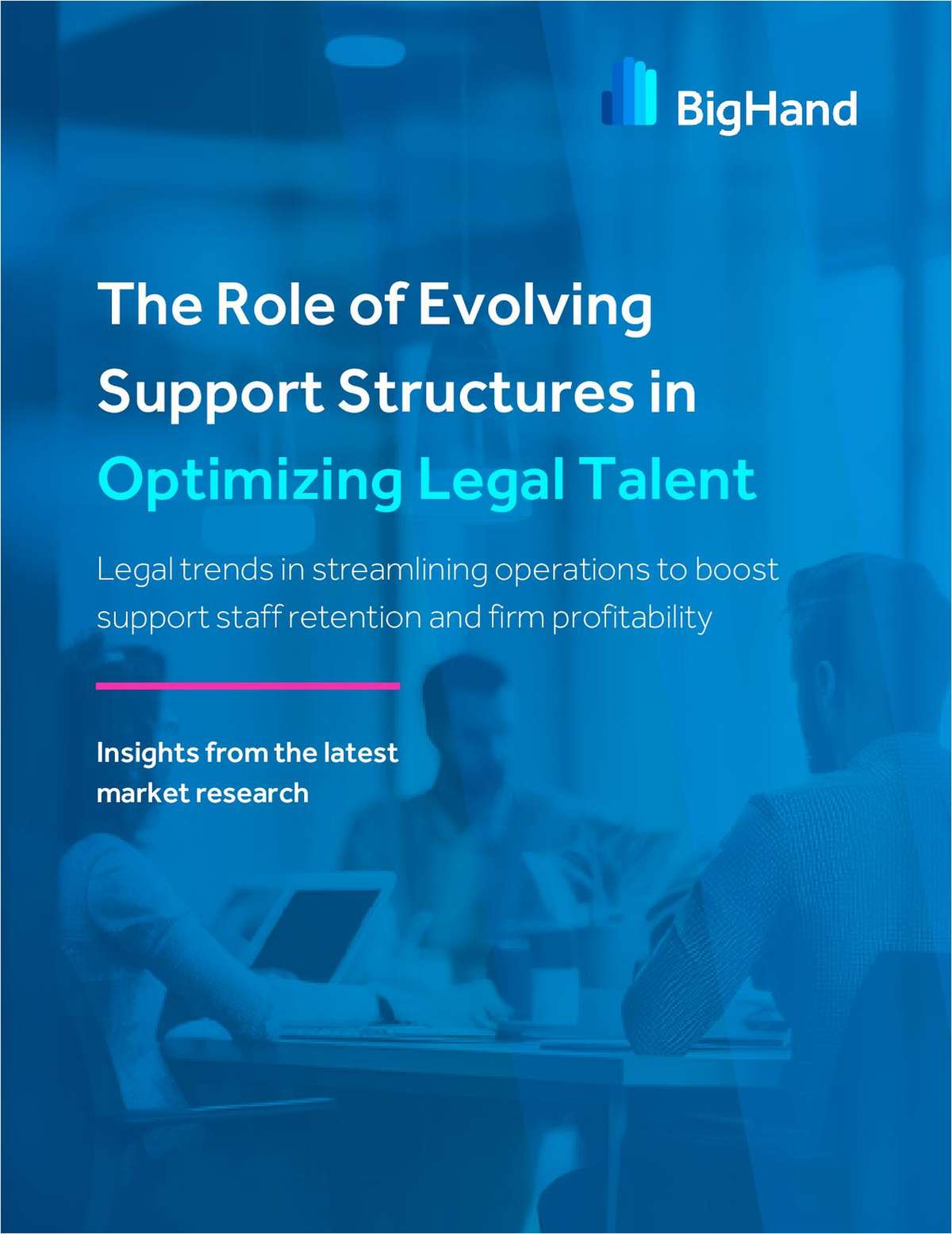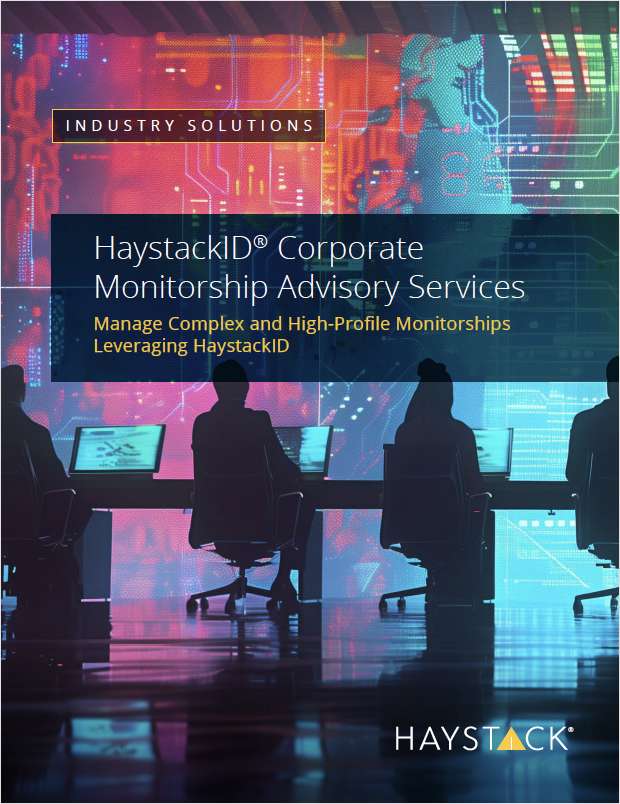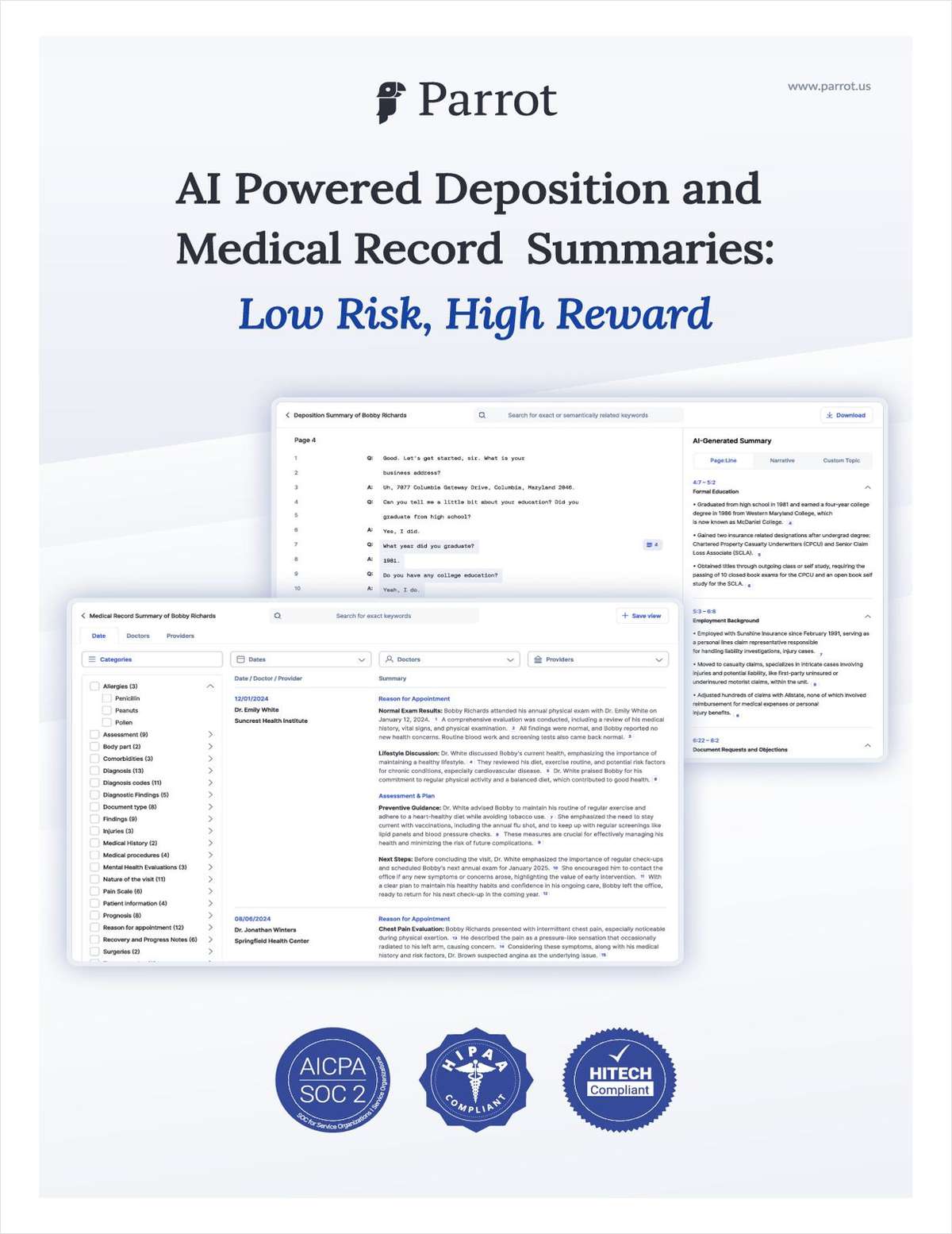Skilled in the Art: The PTAB Needs an Inferiority Complex + Enough Is Enough for IPRs
One company is attempting to argue that all 270 PTAB judges are subject to the Appointments Clause of the U.S. Constitution.
April 10, 2019 at 02:53 PM
7 minute read
Welcome to a slimmed down version of Skilled in the Art. I'm Law.com IP reporter Scott Graham, and I'll be back at full strength on Friday. In the meantime, I've got a couple of nuggets involving the Patent Trial and Appeal Board and a look at the latest addition to Covington & Burling's IP and commercial litigation group.

PTAB Judges Are Inferior, and That's a Good Thing
Remember last summer when the U.S. Supreme Court ruled that the administrative law judges who preside over cases for the Securities and Exchange Commission are officers of the United States subject to the Appointments Clause of the Constitution?
Well, it was only a matter of time before someone tried the same argument on the Patent Trial and Appeal Board. Last fall Netflix persuaded the PTAB to invalidate most of two patents related to digital streaming held by Affinity Labs of Texas. Now Affinity is arguing to the Federal Circuit that, not only did the PTAB judges err in their reasoning, their decision was unauthorized.
Like the SEC judges in Lucia, “PTAB judges are principal officers because of the significant authority they exercise under the AIA,” Affinity states in a briefsigned by Robins Kaplan partner Ryan Schultz. “Because PTAB judges are not appointed as principal officers—by the president, with the advice and consent of Senate, their decisions are unconstitutional.”
So there you have it. Less than a year after the Supreme Court's decision in Oil States, the PTAB is facing another challenge to its existence. If Affinity gets its way, all 270 or so PTAB judges—or, at least, those who handle America Invents Act trials, would have to go through Senate confirmation. Imagine how thrilled Mitch McConnell would be. And who knows what would become of previous PTAB decisions.
But I don't know that Affinity Labs v. Netflix will get the same traction as Oil States.
First, Affinity didn't raise the constitutional issue when it was before the PTAB. So the PTO is arguing to the Federal Circuit that Affinity has forfeited that challenge. There's been some vigorous debate during recent Federal Circuit arguments as to whether the PTAB has the authority to entertain constitutional questions. So maybe it will be forfeited, and maybe it won't.
But if it does reach the merits, the PTO has the benefit of having been through this before. Back in the 2000s, pre-AIA, University of Virginia law professor John Duffy questioned whether the PTO director had constitutional authority to appoint administrative judges to the Board of Patent Appeals and Interferences, the PTAB's predecessor. Duffy argued the BPAI judges were “inferior officers” who could only be appointed by the president or a cabinet secretary—not by the PTO director.
Congress responded by amending the 1999 American Inventors Protection Act to specify that the secretary of commerce would appoint the BPAI judges, in consultation with the PTO director. “Congress took this legislative action specifically to settle any argument that administrative patent judges lack constitutional authority to decide patentability issues under the Appointments Clause,” amici curiae Unified Patents, HP and Engine Advocacy argue in support of Netflix. Their brief is signed by Finnegan Henderson Farabow Garrett & Dunner partner James Barney, with help from HP senior IP litigation counsel Anthony Baca and Unified's chief IP counsel, Jonathan Stroud.
Plus, they argue, the PTAB judges are inferior officers because they report to a “superior”—the PTO director—who plays a robust role in supervising the board and setting its policy agenda.
Netflix makes the same argument, although in a more theatrical way, if you will. “The director's absolute authority to strip the PTAB judges of their delegated role in the review process at any time further reflects his superiority and their inferiority,” is how Quinn Emanuel Urquhart & Sullivan partner David Perlson puts it in Netflix's brief to the Federal Circuit.
“Once a panel of PTAB judges has rendered a decision, the director can exercise his de facto power of review by ordering the case reheard by a different panel of judges whom he handpicks and whom he may influence as a panel member himself,” Perlson points out.
To put an even finer point on it, Perlson notes that “in theory, the director could order serial rehearings of a case, using different combinations of PTAB judges, until a panel reached a decision with which he agreed.”
In other words, the PTO director has the process so rigged that PTAB judges could never be considered principal officers.
I'm not sure that's how the PTAB judges like to think of their role. But if this extinguishes the latest existential challenge, I guess they'll be grateful.

New Rule: Pick Your Best IPR Challenges
One policy change the current PTO director, Andre Iancu, made last fall was the establishment of new rules for determining which PTAB decisions will be designated “precedential”—binding on the PTAB in all future proceedings—or “informative,” which are more like non-binding best practices.
In the past, either designation required a majority vote of all of the PTAB—imagine an en banc hearing of a court with 270 judges. The result was very few precedential decisions. Iancu's new standard operating procedures vest that power in a smaller group of senior PTAB and PTO personnel (including, of course, the director). And they've been getting to work.
The PTO used the process last week to make clear that loading up an inter partes review petition with too many challenges—even if there are a couple of good ones in the bunch—can cost a petitioner its day in administrative court.
In Chevron Oronite v. Infineum USA, petitioner Chevron challenged all 20 claims of Infineum's 6,723,685 patent as obvious over a combination of three prior art references. The PTAB said Chevron demonstrated a reasonable likelihood of prevailing on two of the 20 claims. But because of the Supreme Court's decision last year in SAS Institute, the PTAB is now required to review and decide every challenge raised in a petition, even if it's really only interested in one or two. “On this record, instituting a trial with respect to all 20 claims based on evidence and arguments directed to dependent claims 3 and 4 is not an efficient use of the board's time and resources,” Administrative Patent Judge Jon Tornquist wrote.
It was a similar story in Deeper UAB v. Vexilar. Both were designated informative on Friday.
Pillsbury Winthrop Shaw Pittman partner Bill Atkins, editor of The PTAB Handbook, said the decisions are the continuation of a trend. In the first years following the AIA, petitioners could challenge a patent with multiple petitions, and if those weren't accepted they could bring new petitions raising new arguments. More recently the PTAB as an institution has been cracking down on serial petitions, and now it seems it's going to require more focus within a petition. ”It's a different place than we were a few years ago,” he said. “I think this is all part of growing up.”
Winnowing down an IPR petition will pose challenges for practitioners, he said, since what is and isn't a meritorious challenge often involves some subjective opinion. Fashioning an IPR might become more like framing an appeal: “It's the old adage of you don't want to go up on seven different issues, you want to pick your best three.”
Cravath Alum Joins Covington
IP and commercial litigator Teena Sankoorikal has joined Covington & Burling. But she isn't abandoning her Cravath Swaine & Moore roots altogether.
Sankoorikal left Cravath in 2017 to join Levine Lee, a firm co-founded by partners who were Cravath alums. More recently she decided she'd prefer the broader platform a firm like Covington can provide. She told my ALM colleague Jack Newsham that working with Micaela McMurrough, a Covington IP partner who also hails from Cravath, was one part of the draw.
Asked about Sankoorikal's departure, Kenneth Lee of Levine Lee said, “Teena is a friend and a terrific lawyer and we wish her nothing but the best.”
That's all from Skilled in the Art today. I'll see you all again on Friday.
This content has been archived. It is available through our partners, LexisNexis® and Bloomberg Law.
To view this content, please continue to their sites.
Not a Lexis Subscriber?
Subscribe Now
Not a Bloomberg Law Subscriber?
Subscribe Now
NOT FOR REPRINT
© 2025 ALM Global, LLC, All Rights Reserved. Request academic re-use from www.copyright.com. All other uses, submit a request to [email protected]. For more information visit Asset & Logo Licensing.
You Might Like
View All
Skilled in the Art With Scott Graham: I'm So Glad We Had This Time Together

Design Patent Appeal Splinters Federal Circuit Panel + Susman Scores $163M Jury Verdict + Finnegan Protects Under Armour's House
Trending Stories
- 1Sharpening Residential Insurance Fraud Defense Strategies: Insights for Insurers to Mitigate Risk in 2025
- 2Reversal of Fortune: Restoring Owners’ Equity Under New Jersey’s Tax Sale Law
- 3Black Judges Discuss Growing Up During Segregation, Efforts to Diversify the Profession
- 4As They Dissolve the Firm, Equity Partners in Houston Trial Firm Hodges & Foty Dispute Over Access to Bank Accounts
- 5How I Made Office Managing Partner: 'Always Be Willing to Work Harder Than the Person Next to You,' Says Esther Cho of Stradley Ronon
Who Got The Work
J. Brugh Lower of Gibbons has entered an appearance for industrial equipment supplier Devco Corporation in a pending trademark infringement lawsuit. The suit, accusing the defendant of selling knock-off Graco products, was filed Dec. 18 in New Jersey District Court by Rivkin Radler on behalf of Graco Inc. and Graco Minnesota. The case, assigned to U.S. District Judge Zahid N. Quraishi, is 3:24-cv-11294, Graco Inc. et al v. Devco Corporation.
Who Got The Work
Rebecca Maller-Stein and Kent A. Yalowitz of Arnold & Porter Kaye Scholer have entered their appearances for Hanaco Venture Capital and its executives, Lior Prosor and David Frankel, in a pending securities lawsuit. The action, filed on Dec. 24 in New York Southern District Court by Zell, Aron & Co. on behalf of Goldeneye Advisors, accuses the defendants of negligently and fraudulently managing the plaintiff's $1 million investment. The case, assigned to U.S. District Judge Vernon S. Broderick, is 1:24-cv-09918, Goldeneye Advisors, LLC v. Hanaco Venture Capital, Ltd. et al.
Who Got The Work
Attorneys from A&O Shearman has stepped in as defense counsel for Toronto-Dominion Bank and other defendants in a pending securities class action. The suit, filed Dec. 11 in New York Southern District Court by Bleichmar Fonti & Auld, accuses the defendants of concealing the bank's 'pervasive' deficiencies in regards to its compliance with the Bank Secrecy Act and the quality of its anti-money laundering controls. The case, assigned to U.S. District Judge Arun Subramanian, is 1:24-cv-09445, Gonzalez v. The Toronto-Dominion Bank et al.
Who Got The Work
Crown Castle International, a Pennsylvania company providing shared communications infrastructure, has turned to Luke D. Wolf of Gordon Rees Scully Mansukhani to fend off a pending breach-of-contract lawsuit. The court action, filed Nov. 25 in Michigan Eastern District Court by Hooper Hathaway PC on behalf of The Town Residences LLC, accuses Crown Castle of failing to transfer approximately $30,000 in utility payments from T-Mobile in breach of a roof-top lease and assignment agreement. The case, assigned to U.S. District Judge Susan K. Declercq, is 2:24-cv-13131, The Town Residences LLC v. T-Mobile US, Inc. et al.
Who Got The Work
Wilfred P. Coronato and Daniel M. Schwartz of McCarter & English have stepped in as defense counsel to Electrolux Home Products Inc. in a pending product liability lawsuit. The court action, filed Nov. 26 in New York Eastern District Court by Poulos Lopiccolo PC and Nagel Rice LLP on behalf of David Stern, alleges that the defendant's refrigerators’ drawers and shelving repeatedly break and fall apart within months after purchase. The case, assigned to U.S. District Judge Joan M. Azrack, is 2:24-cv-08204, Stern v. Electrolux Home Products, Inc.
Featured Firms
Law Offices of Gary Martin Hays & Associates, P.C.
(470) 294-1674
Law Offices of Mark E. Salomone
(857) 444-6468
Smith & Hassler
(713) 739-1250










